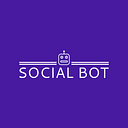Virtual Reality in education: revolutionizing the way we learn
Virtual Reality (VR) technology has the potential to revolutionize the way we learn. By providing a fully immersive, digital environment, VR can create new opportunities for education and training that are not possible with traditional methods. In this article, we will explore how VR is being used in education and how it has the potential to change the way we learn.
One of the key benefits of VR in education is its ability to create new and exciting learning environments. By providing a fully immersive, digital environment, VR can create new opportunities for education and training that are not possible with traditional methods. For example, VR can be used to create realistic simulations of historical events or scientific phenomena, which will make learning more engaging and interactive. Additionally, VR can be used to create virtual field trips, which will make it possible for students to explore places that would be otherwise difficult or impossible to visit.
Another benefit of VR in education is its ability to create more personalized learning experiences. By providing a fully immersive, digital environment, VR can create new opportunities for education and training that are tailored to individual students’ needs and abilities. For example, VR can be used to create virtual environments that are specifically designed to help students with learning disabilities. Additionally, VR can be used to create virtual environments that are specifically designed to help students learn a new language.
The field of vocational training is also likely to be impacted by VR. VR can be used to create realistic simulations of various work environments, which will make it possible for students to practice and perfect their skills in a safe and controlled environment. Additionally, VR can be used to create virtual apprenticeships, which will make it possible for students to learn from experienced professionals.
The field of medicine is also likely to be impacted by VR. VR can be used to create realistic simulations of various medical procedures, which will make it possible for medical students to practice and perfect their skills in a safe and controlled environment. Additionally, VR can be used to create virtual patients, which will make it possible for medical students to practice diagnosing and treating various conditions.
In conclusion, virtual reality technology has the potential to revolutionize the way we learn. By providing a fully immersive, digital environment, VR can create new opportunities for education and training that are not possible with traditional methods. From creating new and exciting learning environments to creating more personalized learning experiences, VR can provide many benefits for students and educators alike. The field of education is one of the most promising areas for VR and it’s important for educators and institutions to stay informed and adapt to these advancements in order to stay competitive in the future. However, it’s important to consider the potential negative effects, such as the cost of VR equipment, and work to mitigate them. As the technology continues to advance, it’s likely that VR will become more accessible and affordable for educators, making it possible for even more students to benefit from this revolutionary learning tool. Furthermore, it’s also important to note that virtual reality is not a replacement for traditional learning methods, but rather a complementary tool that can enhance the learning experience and provide new opportunities for students.
